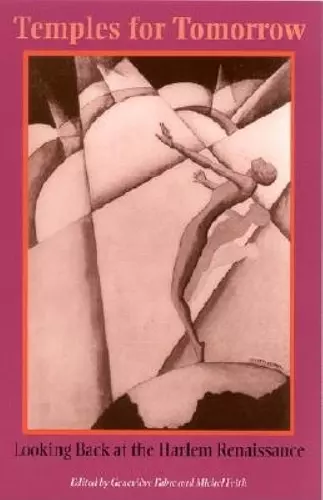Temples for Tomorrow
Looking Back at the Harlem Renaissance
Geneviève Fabre editor Michel Feith editor
Format:Paperback
Publisher:Indiana University Press
Published:19th Sep '01
Currently unavailable, and unfortunately no date known when it will be back

International scholars reconsider the Harlem Renaissance
Reconsiders the period - between two world wars - which confirmed the intuitions of W E B DuBois on the "colour line" and gave birth to the "American dilemma," later evoked by Gunnar Myrdal. This title attempts to assess Harlem's role as a "Black Mecca", as "site of intimate performance" of African American life.
The Harlem Renaissance is rightly considered to be a moment of creative exuberance and unprecedented explosion. Today, there is a renewed interest in this movement, calling for a re-evaluation and a closer scrutiny of the era and of documents that have only recently become available. Temples for Tomorrow reconsiders the period—between two world wars—which confirmed the intuitions of W. E. B. DuBois on the "color line" and gave birth to the "American dilemma," later evoked by Gunnar Myrdal. Issuing from a generation bearing new hopes and aspirations, a new vision takes form and develops around the concept of the New Negro, with a goal: to recreate an African American identity and claim its legitimate place in the heart of the nation. In reality, this movement organized into a remarkable institutional network, which was to remain the vision of an elite, but which gave birth to tensions and differences.
This collection attempts to assess Harlem's role as a "Black Mecca", as "site of intimate performance" of African American life, and as focal point in the creation of a diasporic identity in dialogue with the Caribbean and French-speaking areas.
Essays treat the complex interweaving of Primitivism and Modernism, of folk culture and elitist aspirations in different artistic media, with a view to defining the interaction between music, visual arts, and literature.
Also included are known Renaissance intellectuals and writers. Even though they had different conceptions of the role of the African American artist in a racially segregated society, most participants in the New Negro movement shared a desire to express a new assertiveness in terms of literary creation and indentity-building.
ISBN: 9780253214256
Dimensions: unknown
Weight: unknown
408 pages